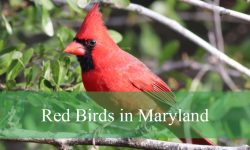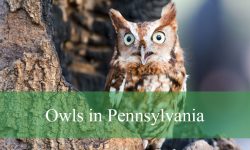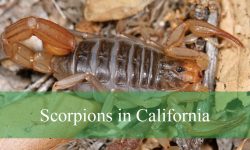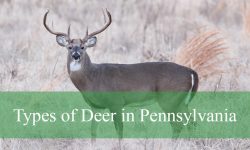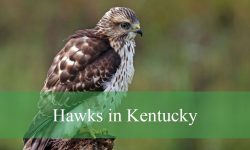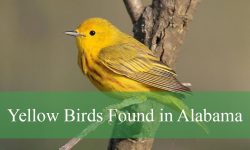Small yellow birds in North America add a burst of color and vitality to the landscape, captivating birdwatchers with their vibrant hues and cheerful melodies. From the dazzling American Goldfinch to the lively Yellow Warbler, these avian wonders, with their sunny plumage, are a delight to behold.
Different Types of Small Yellow Birds
American Goldfinch
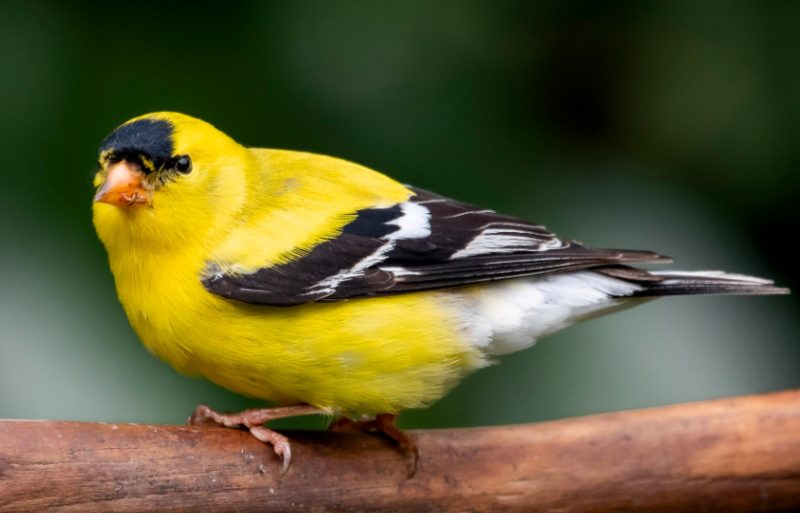
The scientific name for the American Goldfinch is Spinus tristis. It is a bird of great color, especially in the breeding season when the males display their vivid yellow plumage against black wings, tail, and forehead.
These birds thrive on a diet mostly consisting of seeds and grains, and they adapt well to a variety of environments, from weedy fields to suburban backyards. Black oil sunflower seeds in bird feeders will draw them to your garden, and these lovely birds are a great sight in both urban and rural areas.
Yellow-breasted Chat
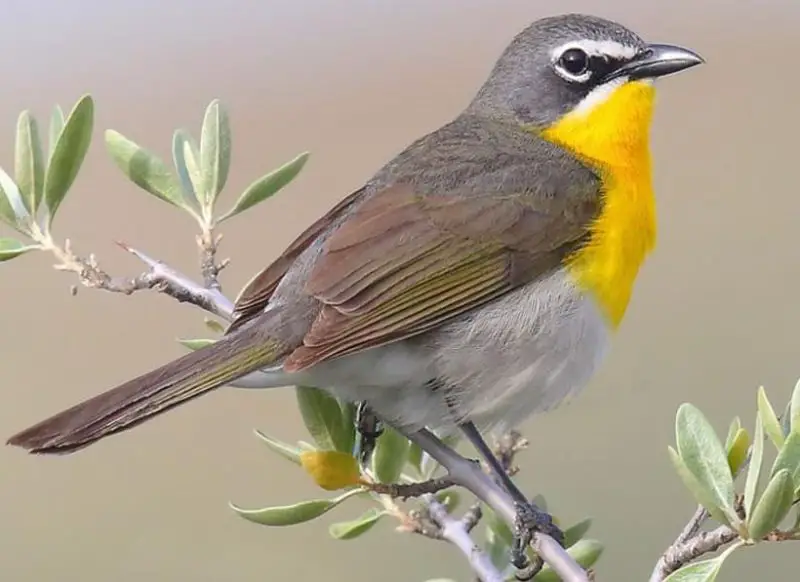
Icteria virens, the scientific name for the Yellow-breasted Chat, is a little bird that resembles a sparrow in size and has olive-green feathers with a bright yellow breast. It has a noticeable white line across its eyebrows and a gray face.
From May to August, these conversations take place all throughout the United States, where they enjoy eating berries like elderberries and wild grapes as well as insects like moths, beetles, ants, and grasshoppers.
Evening Grosbeak
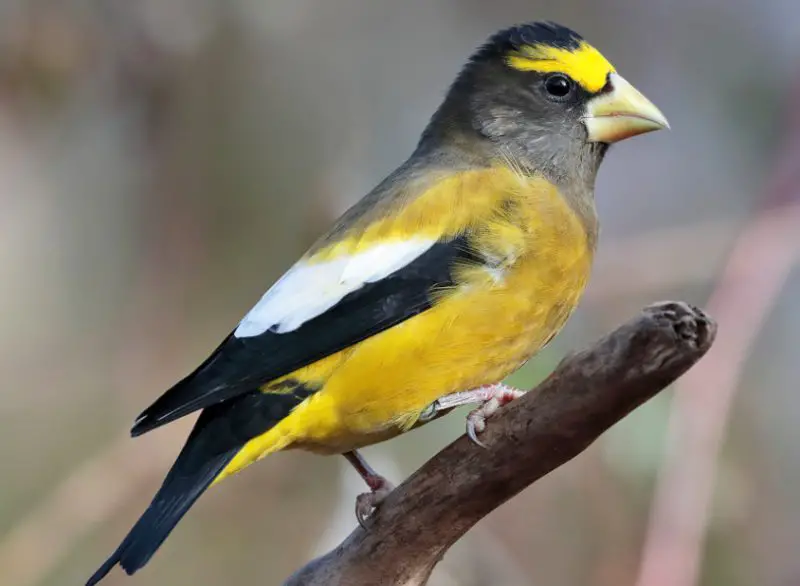
The scientific name for the Evening Grosbeak is Coccothraustes vespertinus, and it is easily distinguished by its large bill. Male adults have a stunning golden mantle, forehead, and brilliant yellow undersides; females and juveniles are primarily yellow-gray in color.
During the winter months, these birds congregate in groups and frequently visit bird feeders, bringing a pop of color to the surrounding area.
Eastern Meadowlark
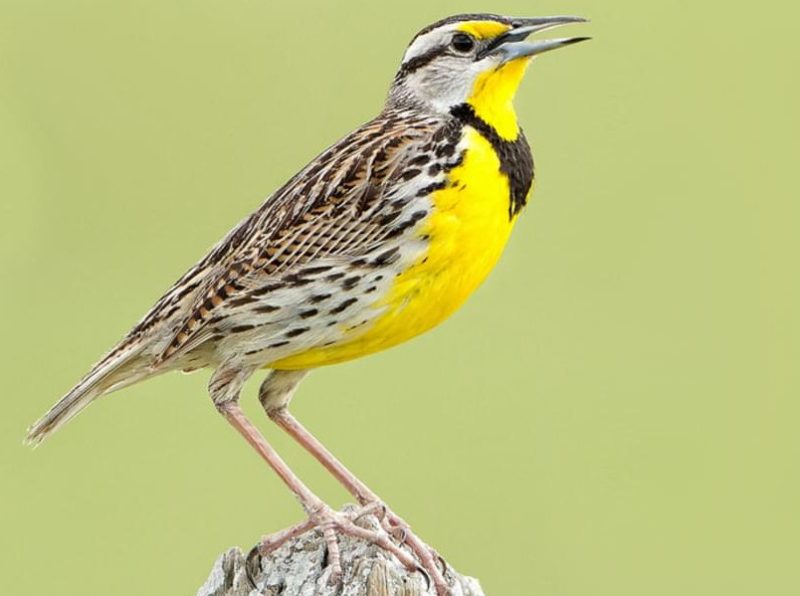
Sturnella magna, the scientific name for the Eastern Meadowlark, is a ground-dwelling bird that is well-known for its vivid appearance and unique feeding habits. It catches seeds and insects with skill thanks to its short tail and conical mouth.
A jet black V on the chest highlights the vibrant lemon underparts, which contrast with the light brown upperparts ornamented with black markings on adult Eastern Meadowlarks.
Western Meadowlark

The Western Meadowlark, scientifically named Sturnella neglecta, shares a resemblance with its Eastern counterpart but inhabits the western regions of North America. Despite overlapping ranges, hybridization between the two species is rare.
Its striking black and golden coloration adds to the delight of observing this iconic bird in its natural habitat.
Canada Warbler
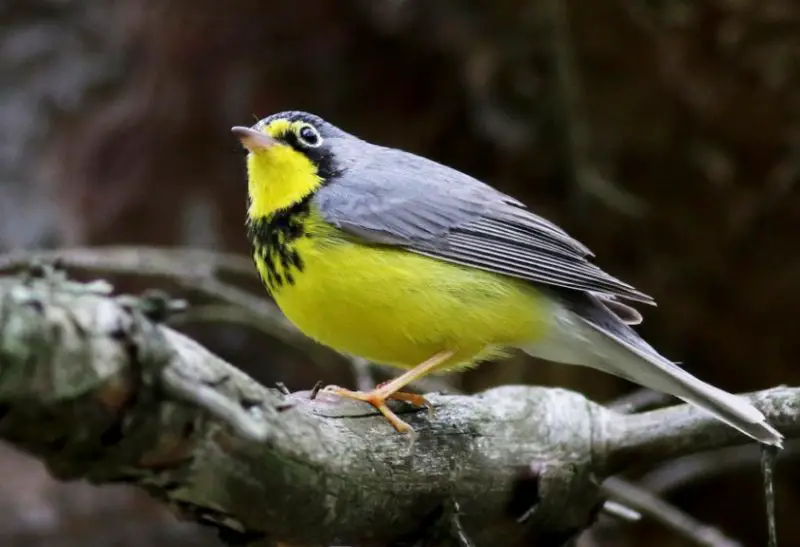
The vibrant songbird known as the Canada Warbler, or Cardellina canadensis in scientific parlance, is mainly found nesting in northern Canada and the eastern states of the United States. Males are identified by their brilliant yellow belly and blue-gray upperparts. A dark stripe band divides their throat from their breast.
Living close to bodies of water, they usually thrive in moist forests with lots of vegetation. They travel to South America in the winter.
Pine Warbler
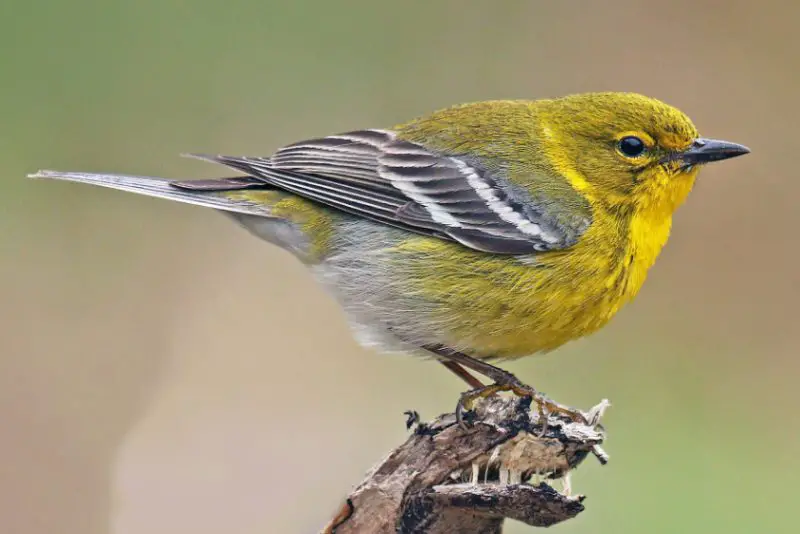
The scientific name for this bird, Setophaga pinus, is Pine Warbler, and it comes from the pine trees from which it is derived. Male adults have olive upperparts and bright golden heads and underparts, with the exception of a white belly; females are more grayish-buff in appearance.
They spend the winter in the southeastern United States of America, where they feed mostly in the subterranean of pine forests, which makes for good observation spots.
Magnolia Warbler
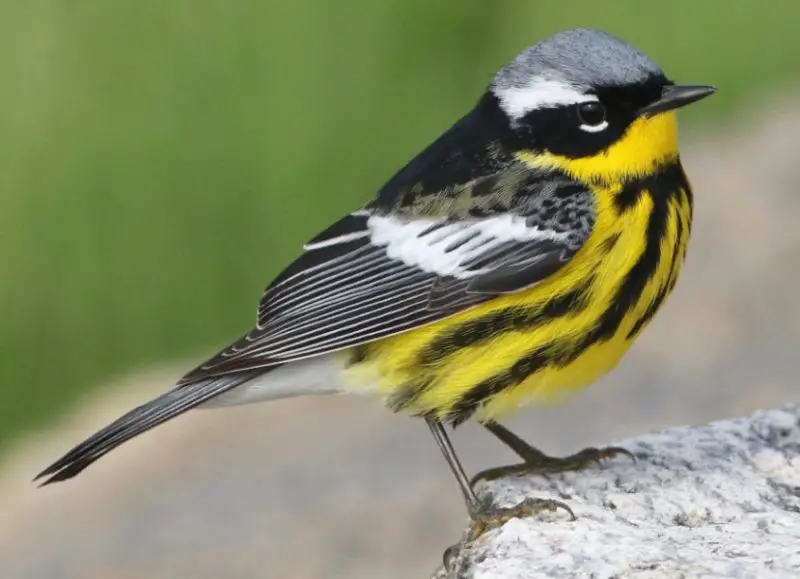
Setophaga magnolia, the scientific name for the adult male Magnolia Warbler, is distinguished by its bright yellow underparts and dark upperparts that are complemented by streaks on the flanks and a black chest band.
Males are easily recognized during breeding season thanks to their black mask and blueish-gray crown. Females are similar in appearance, but their feathers are not black.
They add to the region’s seasonal splendor and can be found in North America from late May to August.
Nashville Warbler
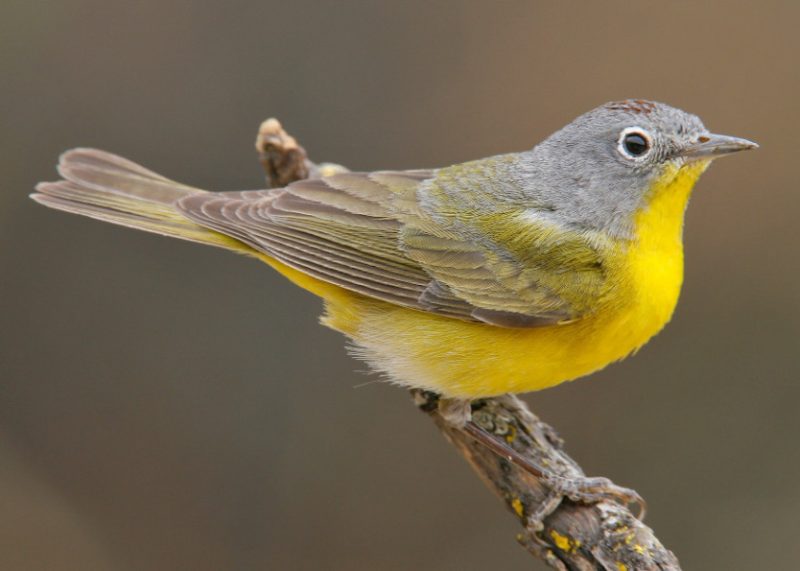
Oreothlypis ruficapilla, the scientific name for the Nashville Warbler, is a colorful bird with gray and yellow plumage. Male adults have blue-gray heads, olive-gray backs, and bright saffron underparts. It can be seen breeding in the northern US and Canada from May to August.
During the winter, it migrates to Central America. It contributes to the richness of bird life in its habitat by thriving in the tangled undergrowth of mixed forests.
Yellow-headed Blackbird
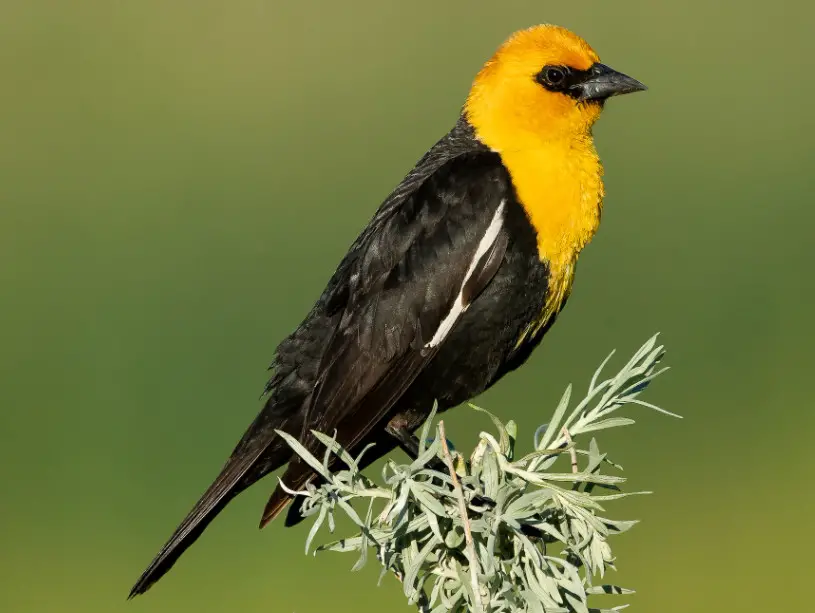
Yellow-headed Blackbirds, scientifically named Xanthocephalus xanthocephalus, are predominantly found in western North America but are occasional visitors beyond their range. Adult males boast bright yellow heads and chests contrasting with jet-black bodies.
During the summer, they feed mainly on insects. Breeding occurs in lowland regions with wetlands and dense cattail growth, providing them with suitable habitats for nesting and raising their young.
Yellow-throated Vireo
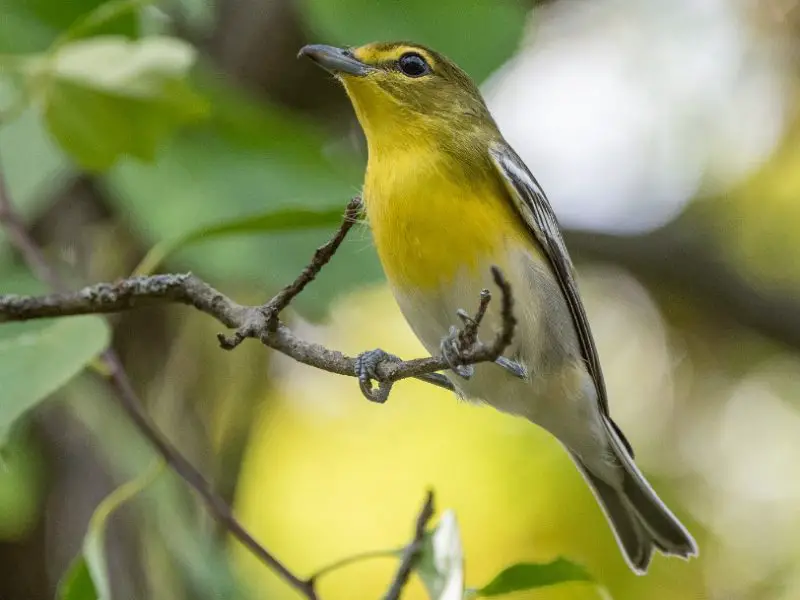
The Yellow-throated Vireo, also known as Vireo flavifrons in science, is a brightly colored songbird with a head that is disproportionately large and a robust beak. The upperparts, face, throat, and breast of both sexes are greenish-yellow, and their dark wings feature two white wingbars.
It forages mostly on treetops, which makes it difficult to view, and it prefers deep woodlands. It migrates to Central America throughout the winter.
White-eyed Vireo
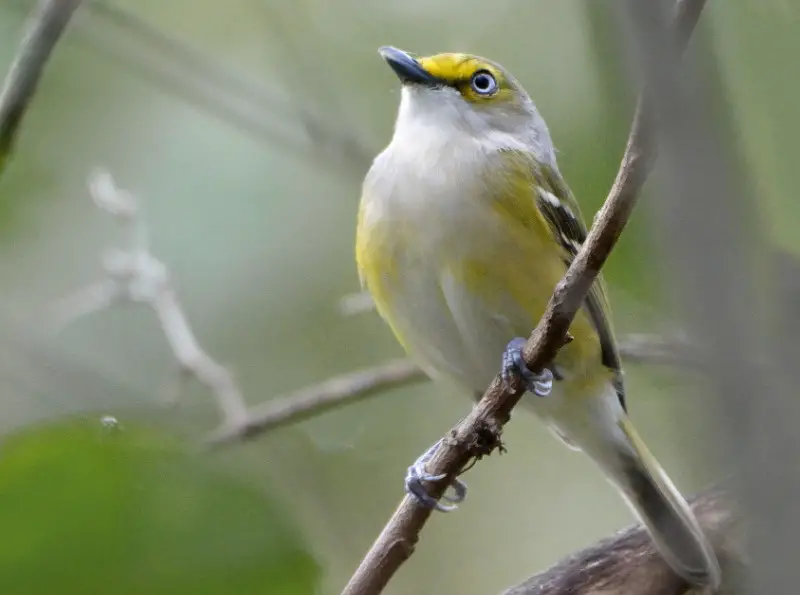
The White-eyed Vireo, scientifically known as Vireo griseus, is a little bird that resembles a female Summer Tanager with its grayish-brown upperparts and softer yellow flanks. The pale iris is its defining characteristic that helps to differentiate it from related species.
They breed in deciduous forests and rely on insects and other invertebrates to survive during their summer visits to the Southeast of the United States.
Blue-winged Warbler

The Blue-winged Warbler, scientifically known as Vermivora cyanoptera, is a vibrant wood warbler. Male adults mostly have yellow underparts and heads, with olive backs and napes. With a small black line running between the eye and beak, its blue-gray wings have two faint white wingbars.
Breeding occurs in the northeastern US from May through August.
Townsend’s Warbler
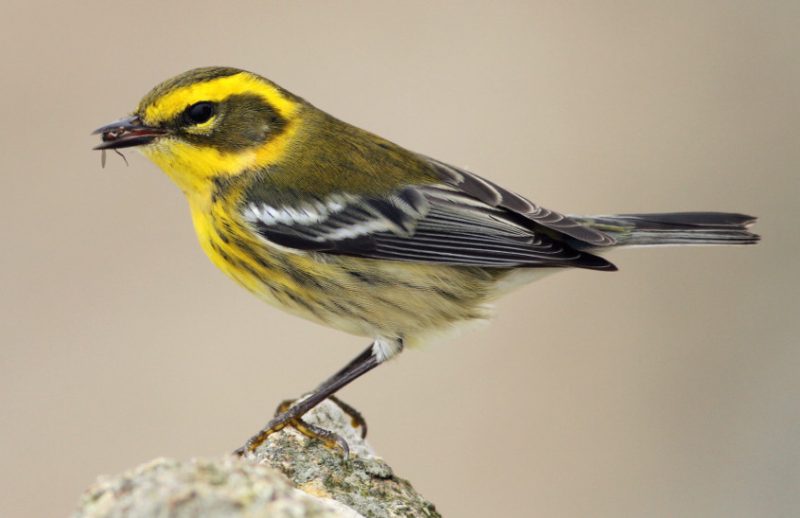
The scientific name for the Townsend’s Warbler is Setophaga townsendi, and it enthralls with its beauty. Male adults have remarkable markings on their heads that are black and yellow. They also have a black breast and golden underparts with dark streaks.
It is mostly a breeder in the Pacific Northwest, but it sometimes sporadically makes an appearance as an uncommon vagrant during spring and fall migrations in southern and eastern states, enchanting birdwatchers with its presence.
Black-throated Green Warbler
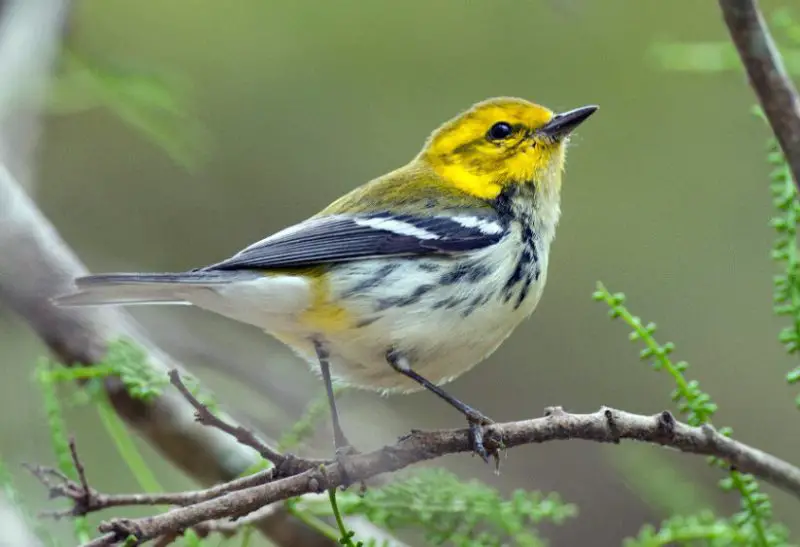
The Black-throated Green Warbler, scientifically termed Setophaga virens, is a colorful member of the warbler family. Adult males boast olive-green backs, bright yellow heads and chests, with distinctive black throats and chests. Females look alike, except they don’t have a black throat.
Found in coniferous and mixed forests, they travel to the Caribbean to spend the winter there.
Cape May Warbler
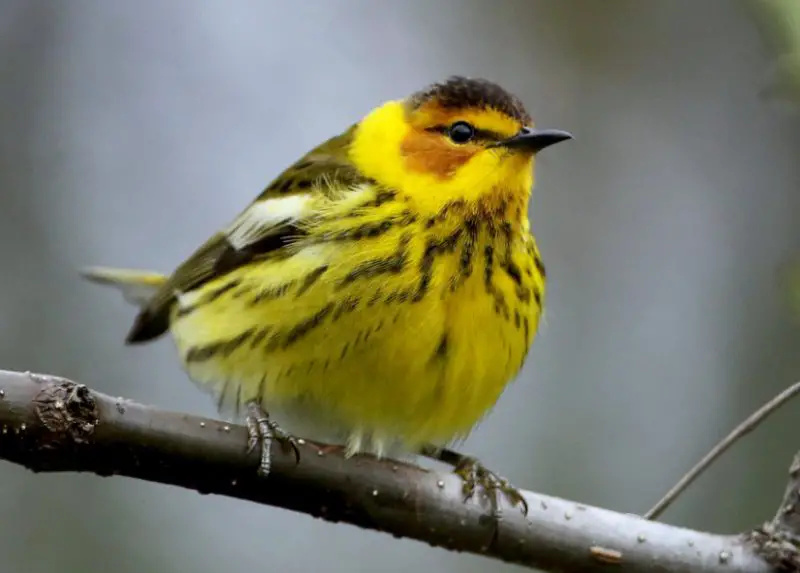
The Cape May Warbler, scientifically known as Setophaga tigrina, is a northern species breeding in eastern Canada and the northern parts of Michigan. Adult males display streaked olive-green backs, yellow faces with chestnut cheeks, and saffron-colored underparts with dark streaks.
They nest in wooded northern regions from May through August, migrating to southern areas during migration, and spending winters in the Caribbean.
Mourning Warbler
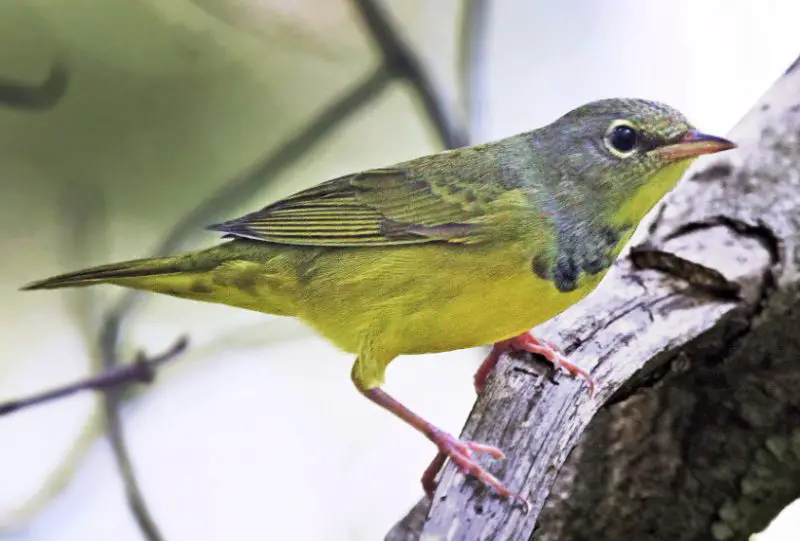
The Mourning Warbler, scientifically named Geothlypis philadelphia, is a vibrant ground-dwelling warbler. Adult males sport a dull yellow body with bright saffron underparts.
Breeding in the northern US and Canada from June to August, they migrate to Central America for the winter. Preferring shrublands and dense thickets, they’re elusive and challenging to observe.
Hooded Warbler
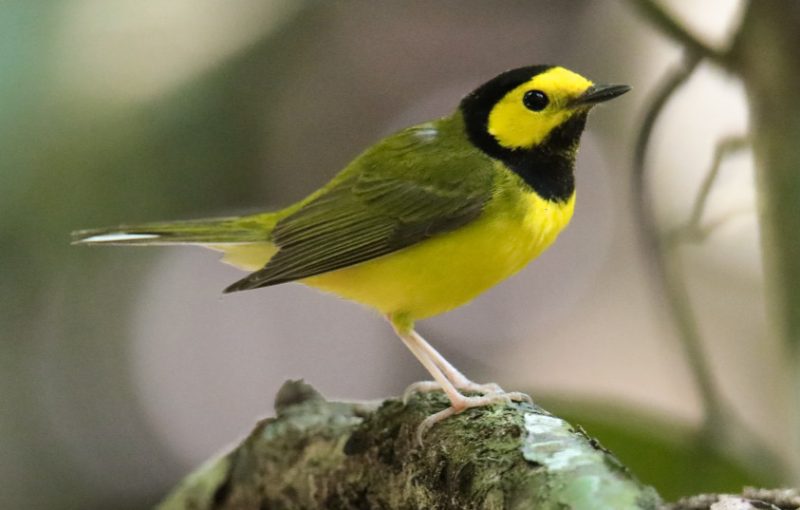
From May to September, the Hooded Warbler, or Setophaga citrina as it is formally known, is a summer visitor to the eastern United States. Against an olive-green back, males display a distinctive black-and-yellow head; females and immatures have no black markings on their heads.
They migrate to Mexico and Central America for the winter, preferring to be seen in backyards rather than at bird feeders. They love dense understory forests.
Great Crested Flycatcher
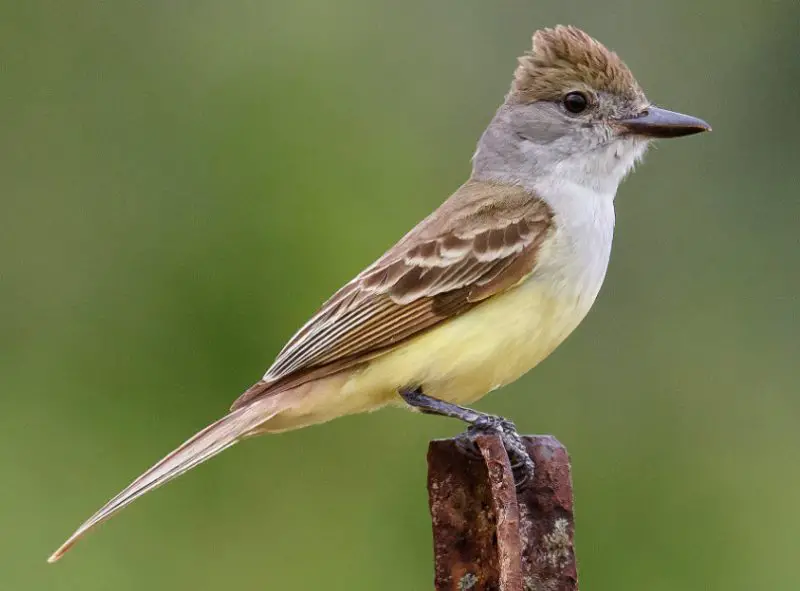
The Great Crested Flycatcher, or Myiarchus crinitus as it is named in science, is a long-bodied, thin bird with yellowish underparts to contrast with its dark brown head and back. It is common in the summertime in the eastern United States and is noticed from April to September.
It nests in several types of wooded habitats and eats berries and insects as food. It moves to Central and South America in the winter.
Yellow Warbler
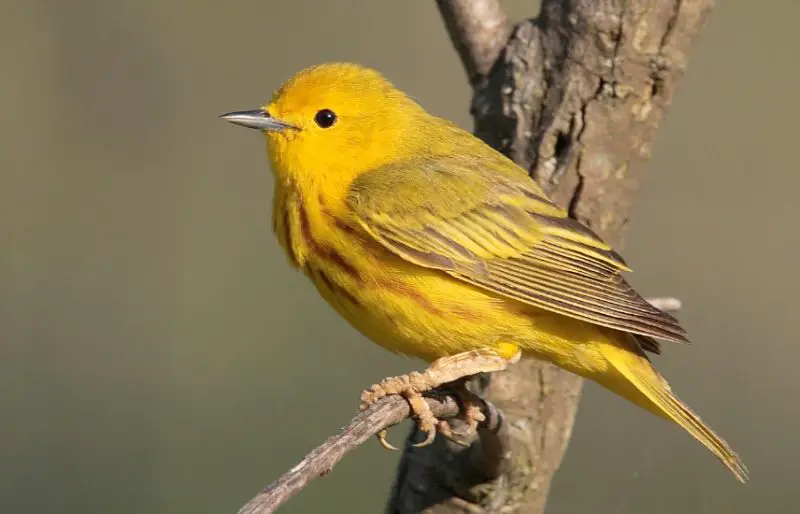
The Yellow Warbler, or Setophaga petechia, truly embodies its name with its vivid yellow plumage. Males are particularly striking, featuring brilliant yellow with subtle, darker wings adorned by two pale wingbars and distinctive reddish stripes decorating their breasts and sides. Females share the bright yellow hue but with more subdued markings, offering a more uniform yellow appearance.
As a migratory species, these small songbirds grace North America with their presence from April to August for breeding, before heading to warmer climates in Central and Northern South America for the winter months.
Prothonotary Warbler
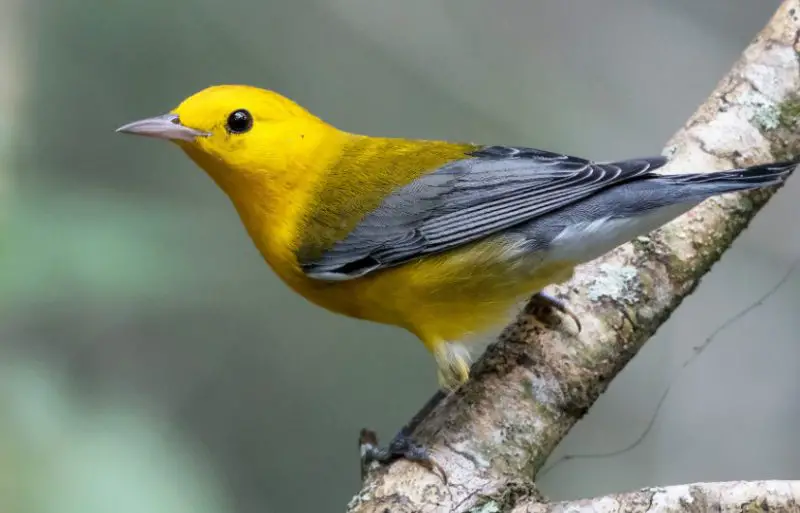
With its remarkable lemon-yellow body, gray-blue wings and tails, and piercing black eyes, the Prothonotary Warbler—scientifically named Protonotaria citrea—stands out. Small and colorful, this bird is a beloved summer visitor throughout the eastern United States, easily identified by its white underbelly when viewed from underneath.
Though females tend to be a bit lighter, males and females seem similar. They are well-suited to their wetland habitats, favoring swampy areas and eating mostly snails and insects. They travel to the Gulf Coast and further south when the seasons change so they can continue their life cycle in warmer climates.
Wilson’s Warbler
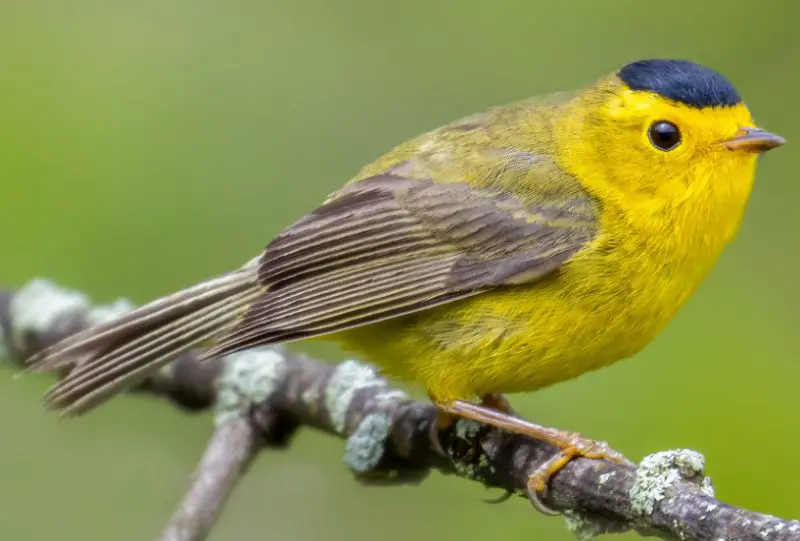
The tiny but colorful Wilson’s Warbler, or Cardellina pusilla, is distinguished by its olive upperparts and velvety, buff-green underparts. The characteristic black hat of adult males provides a remarkable contrast to their otherwise yellow plumage.
This species, which breeds mostly in Canada, visits the United States in the spring and fall. It thrives in its lush, secluded surroundings, preferring wet woodlands and dense vegetation, where it forages skillfully for insects and other invertebrates.
Yellow-rumped Warbler
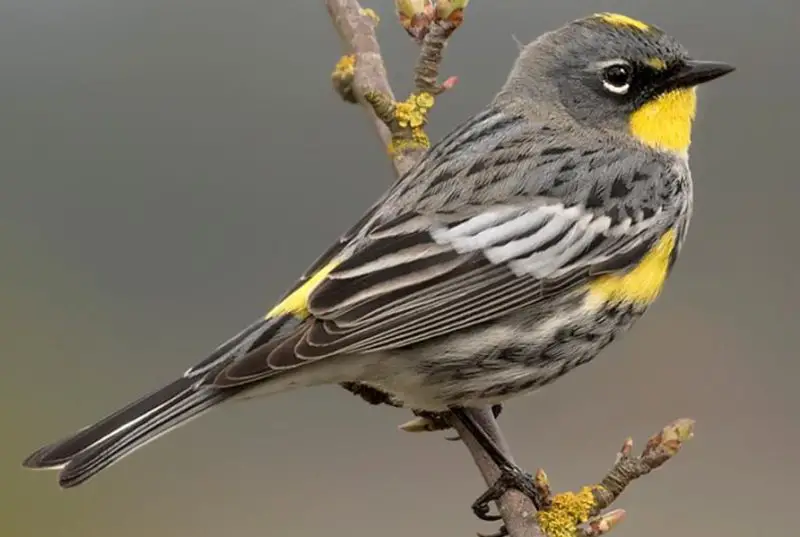
Setophaga coronata, the scientific name for the Yellow-rumped Warbler, is distinguished by a vivid yellow rump that is shared by both sexes. These little warblers have stunning blueish-gray upperparts with dark streaks and golden flanks.
They grace Canada and the Pacific Northwest as summer visitors, their presence spanning from May through August, adding a splash of color to the landscape.
Common Yellowthroat
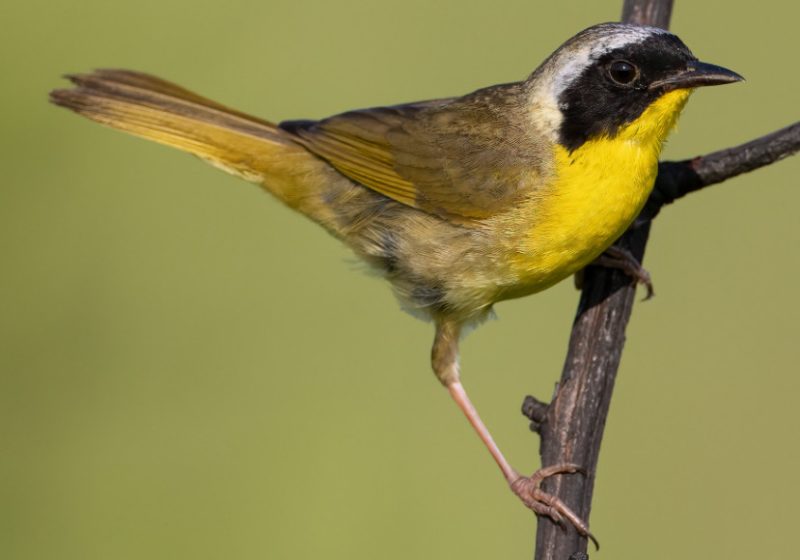
Geothlypis trichas, the scientific name for the Common Yellowthroat, is a colorful warbler that is distinguished by its eye-catching appearance. Male adults have brilliant yellow breasts and throats and a striking black face mask covering their cheeks and foreheads. Women wear the same vivid colors but do not wear the black mask.
These migratory birds migrate to the southern United States and Central America for the winter, where they graze on insects and other invertebrates in shrublands and grassy environments.

